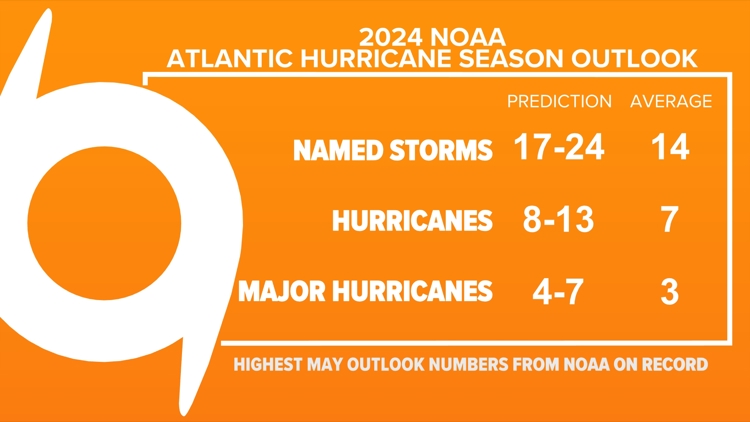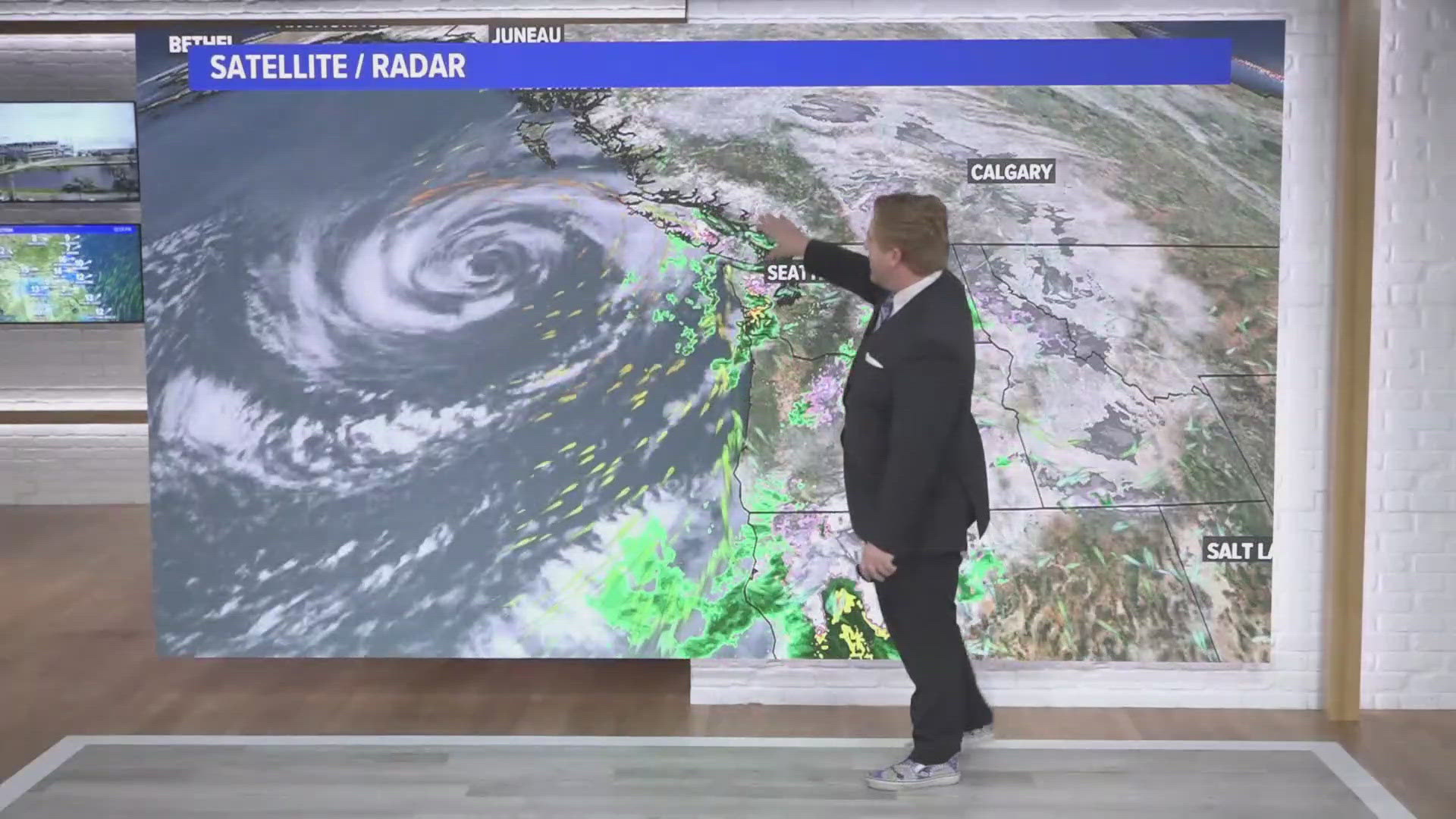JACKSONVILLE, Fla. — The National Oceanic and Atmospheric Administration (NOAA) has released its updated outlook for the Atlantic hurricane season, and the forecast continues to point towards an above-average level of activity.
This comes as no surprise given the conditions already observed this year, including several notable storms which on their own would make 2024 already a memorable season.
Key Updates to the 2024 Hurricane Season Prediction:
- Named Storms: 17-24 (average: 14)
- Hurricanes: 8-13 (average: 7)
- Major Hurricanes (Category 3 or higher): 4-7 (average: 3)
These predictions mark a significant increase from the historical averages.
Contributing Factors to the Above-Average Activity
Several factors are contributing to this elevated hurricane activity:
Warm Sea Surface Temperatures: The Atlantic Ocean is currently experiencing above-average sea surface temperatures, which provide the necessary energy to fuel stronger and more frequent storms. These temperatures have not only been higher than usual this year but are also part of a longer-term trend of warming waters, which has been contributing to increasingly active hurricane seasons.
La Niña Conditions: The presence of La Niña, a climate pattern characterized by cooler-than-average sea surface temperatures in the central and eastern Pacific Ocean, has also been a key driver. La Niña typically leads to reduced wind shear in the Atlantic, creating a more favorable environment for hurricane development.
Notable Storms So Far
The 2024 season has already seen several significant storms:
- Alberto: Formed on June 17, marking an early start to the season.
- Beryl: Set multiple records, including becoming the earliest Category 5 hurricane on record. Barrel caused extensive damage across the Windward Islands and continued into the Caribbean, ultimately impacting Texas. The storm resulted in over 60 reported deaths and caused an estimated $8.6 billion in damage.
- Debby: Brought severe flooding rains to Florida and the East Coast of the United States, exacerbated by the high sea surface temperatures in the Atlantic.
Looking Ahead: Peak Season Expectations
As we move into the peak of hurricane season, the conditions suggest that the Atlantic will remain highly active. The combination of warm waters and favorable atmospheric conditions is likely to lead to more powerful storms in the coming months according to NOAA.



